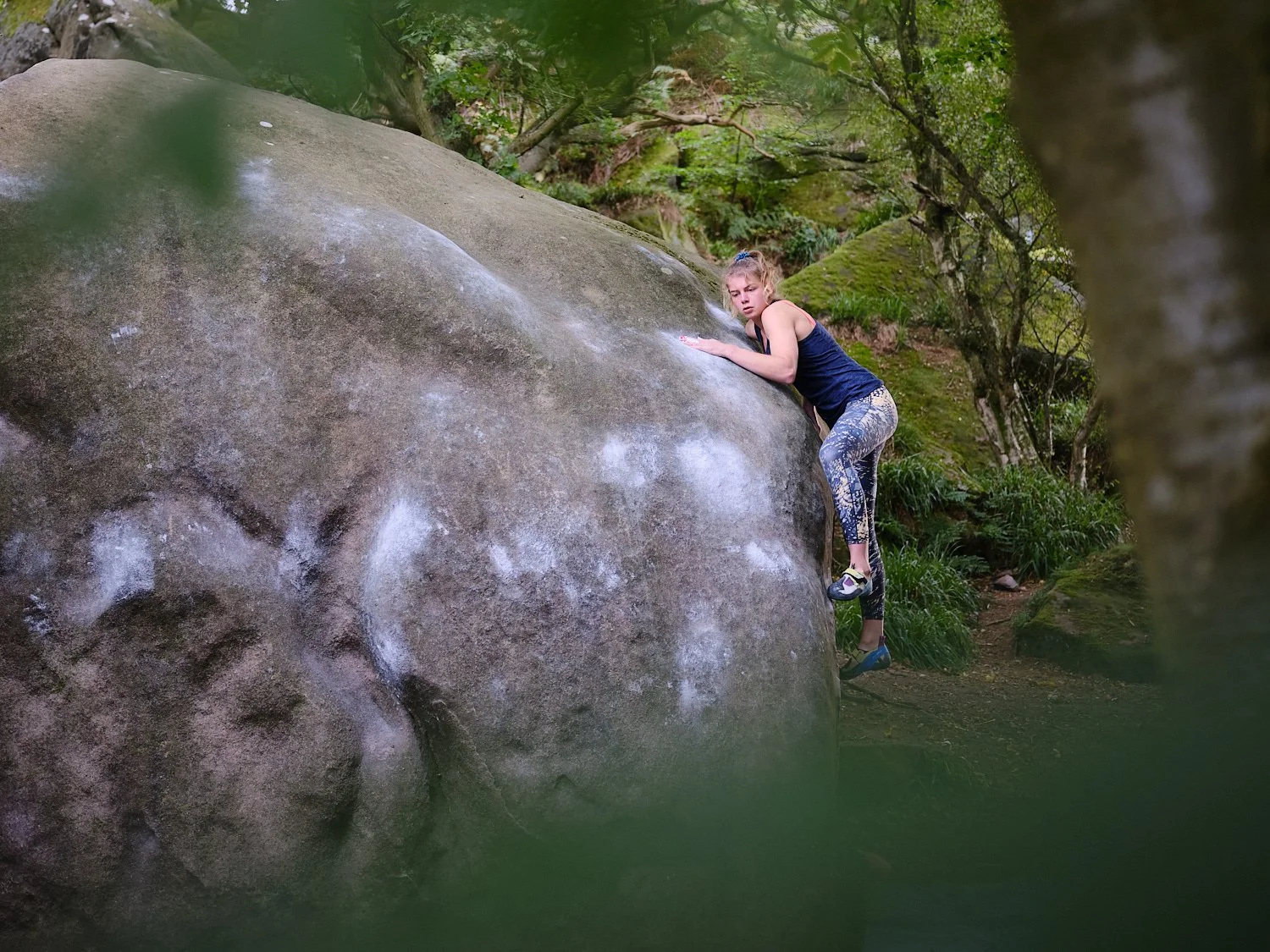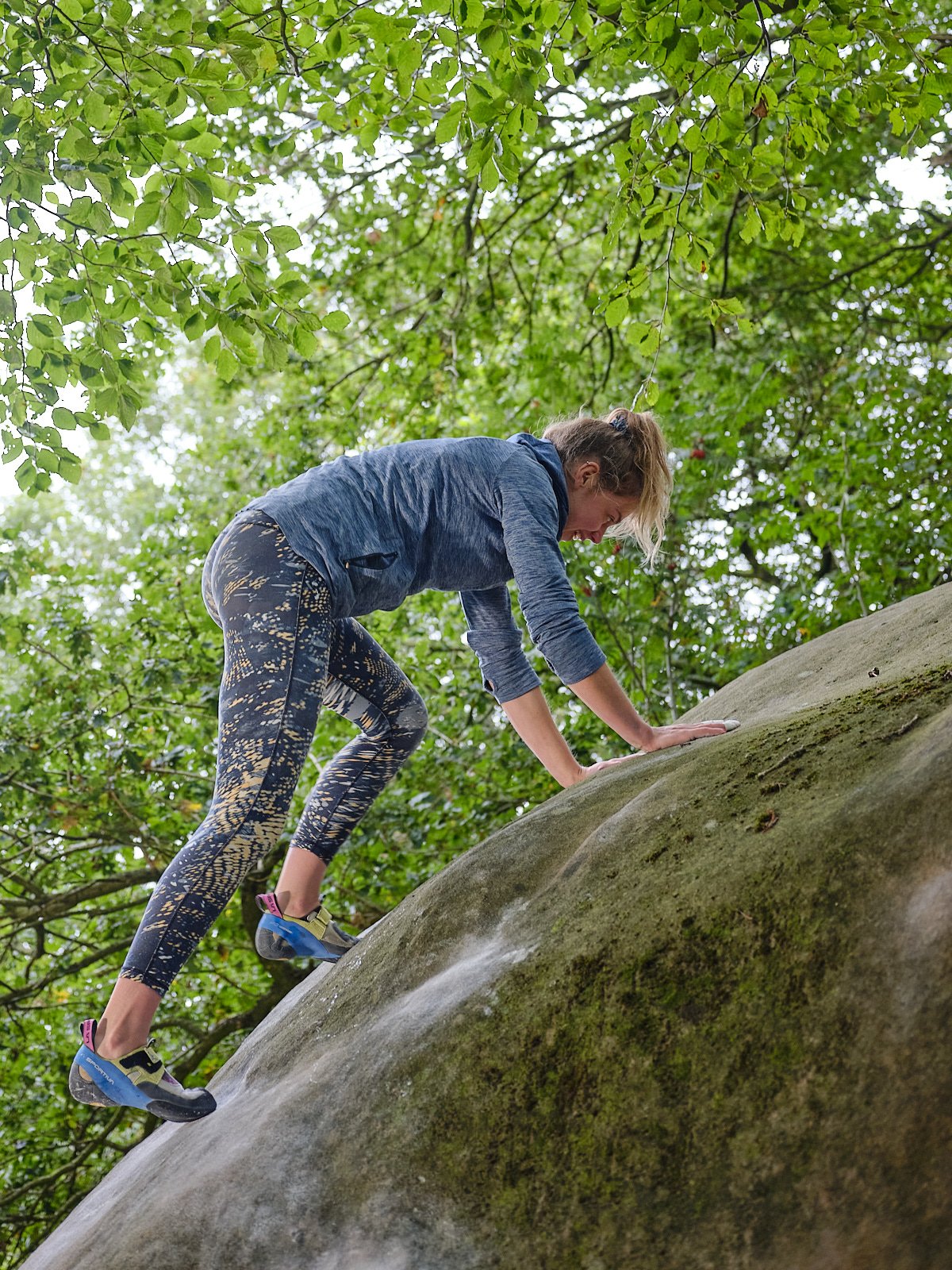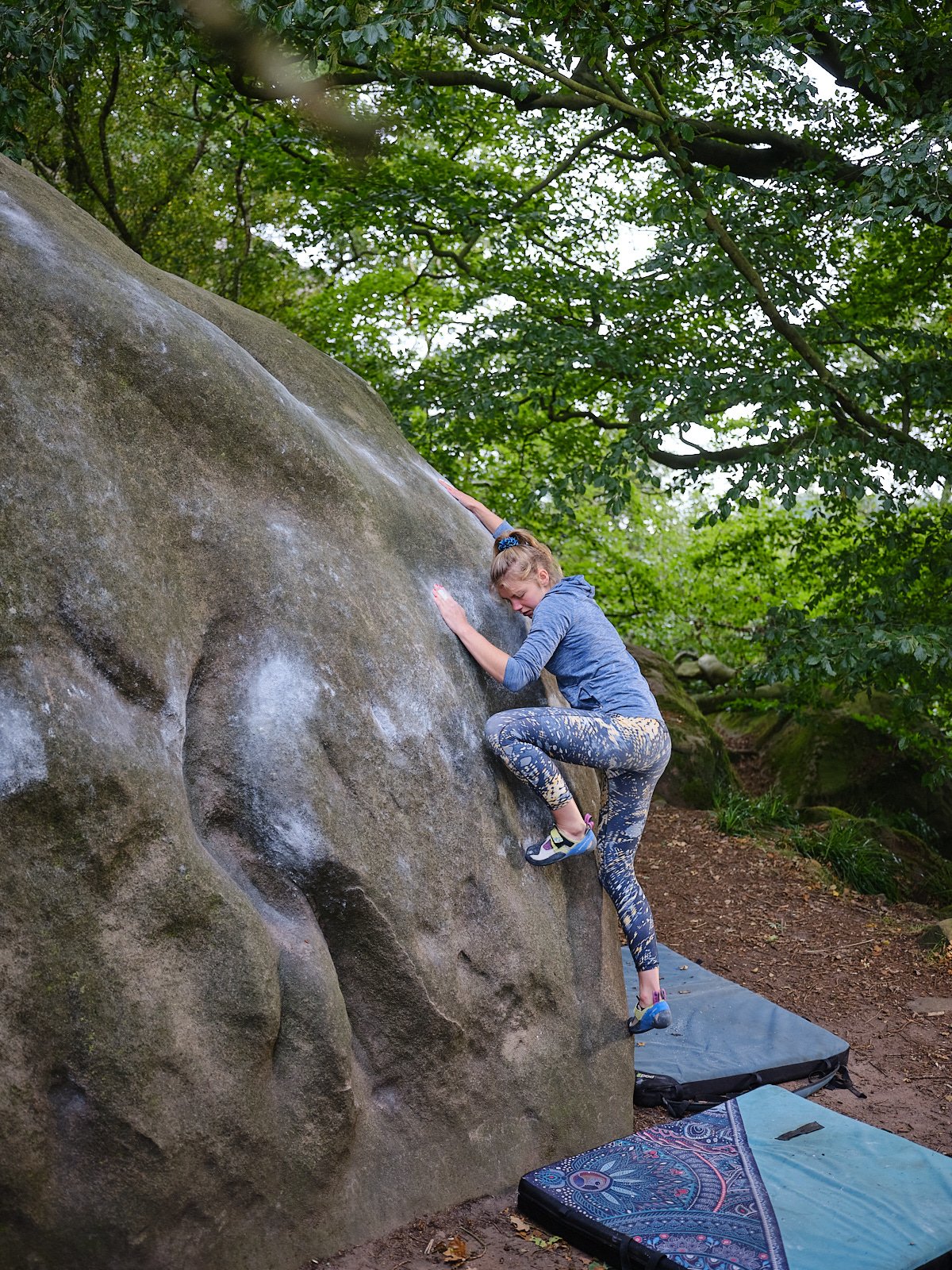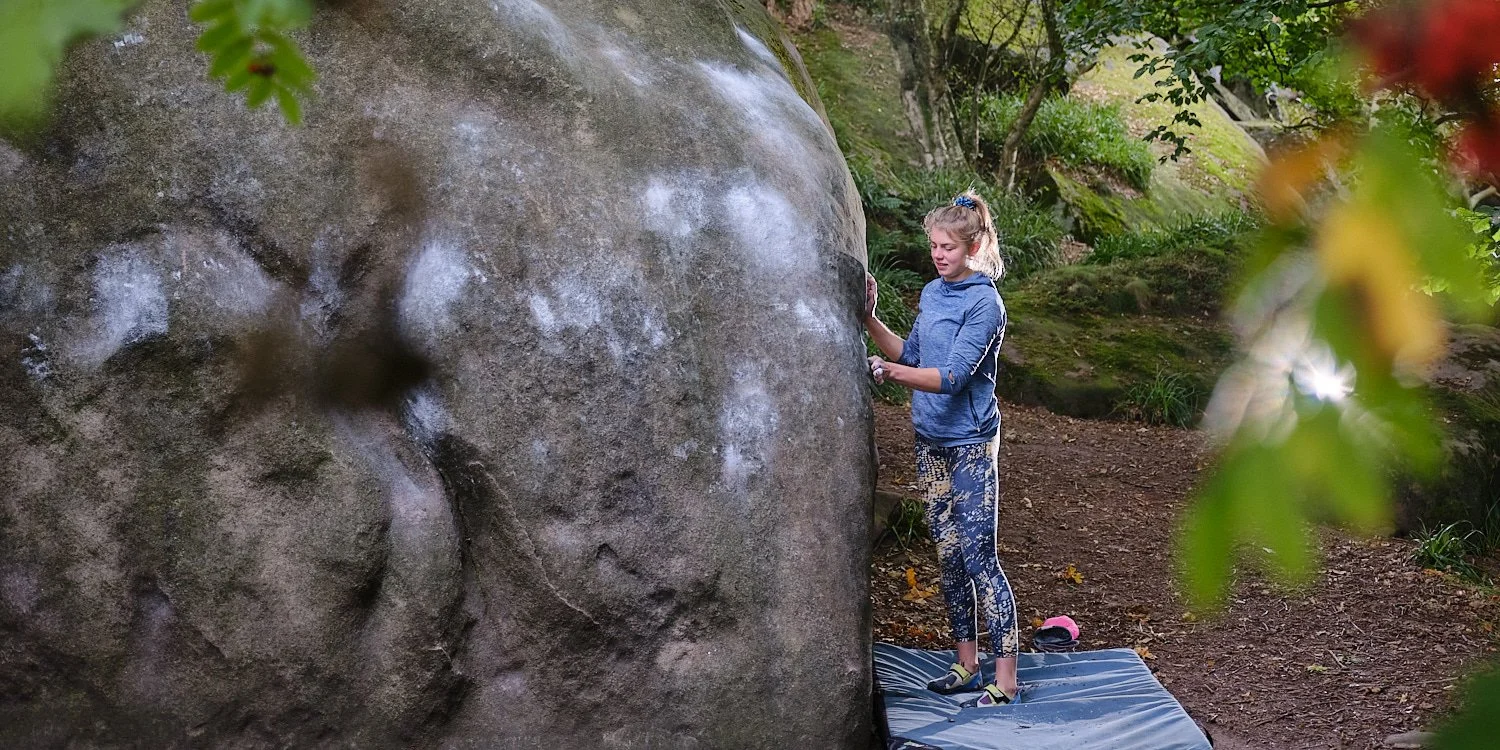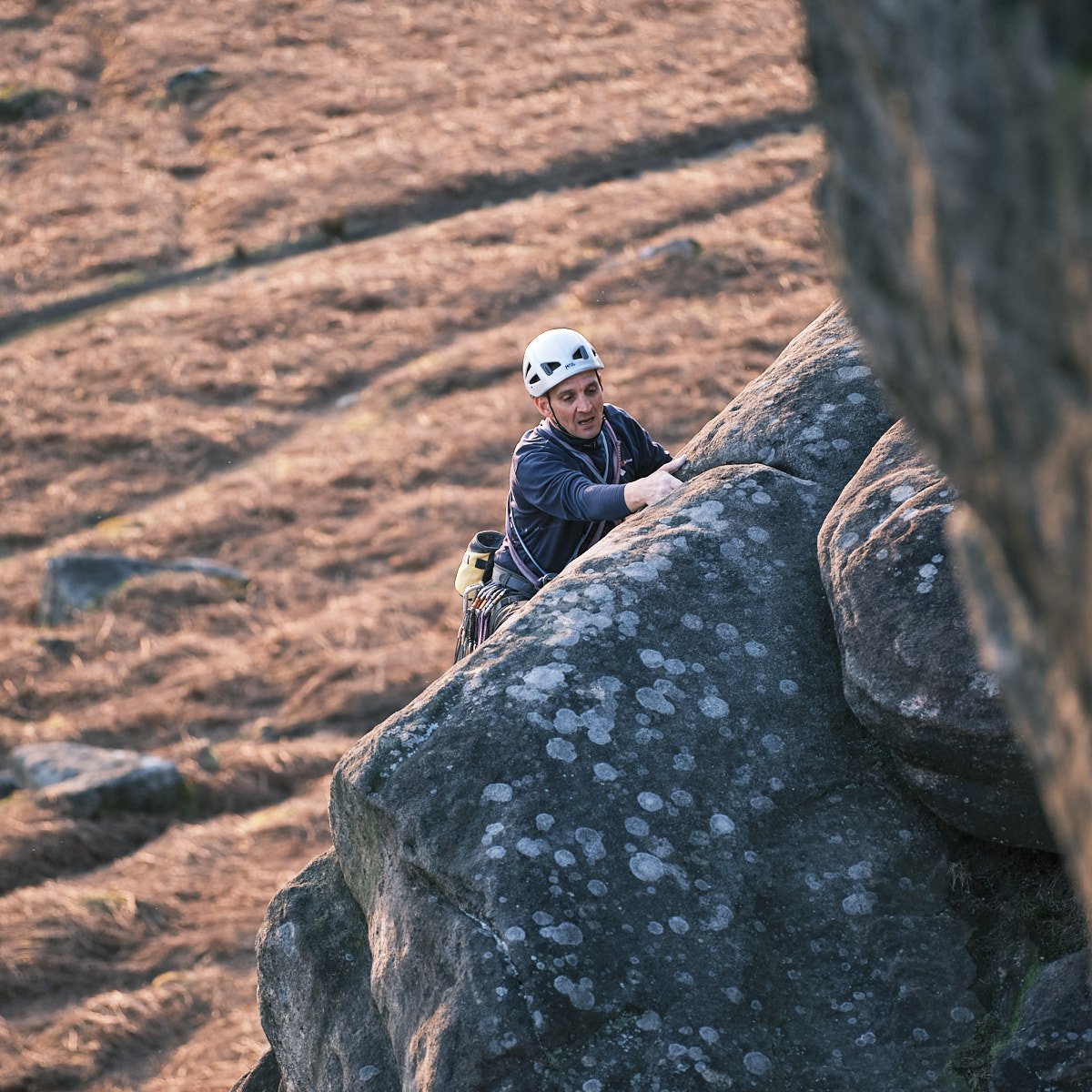Pennine Lines w/c 10 April 2023
|| Mixed, windy, but staying cool || Busy week in the Peak ||
Egg Arête || Climber: Gwyneth Uttley
|| Behind The Scenes ||
A Grit Blocs classic for everyone not in Fontainebleau this Easter
It would be remiss of me to allow this email to be the only one you receive over the Easter weekend to not contain some sort of egg or egg-related reference. I will spare you the puns and just offer up this image, which didn’t make it into Grit Blocs, although the problem did. This time next year expect an image of Easter Rib at Stanage, and the year after maybe Creme Egg Eliminate at Caley.
The problem needs no introduction really. The Egg is often described in terms of its likeness to a Fontainebleau boulder, but to be honest a lot of Font boulders don't have slopers as blank and uniform as this. You'll not find any of that Bleau-style rippled texture here, or any tiny gratton edges to crimp in desperation. No straws to clutch at.
Suffice to say it’s no pushover; think full-hand sloper pressing, a half-mantle maybe, and for most of us involving a blind foot swap. Hence it’s exactly the sort of climbing you’d hate to find yourself faced with at the top of a trad route with your last gear below your feet - no matter what number your E-grade calculator throws out. Despite what you might be told, certain things you can’t really put a number on.
|| Focus on.... ||
Chalk
On a slight tangent, one of the interesting parts of publishing Grit Blocs was seeing the reaction to the possible cover photos when Vertebrate shared them on social media. I feel we made the right choice, but in the process of getting there some of the comments were illuminating. Aside from highlighting just how staid and formulaic some commentators' ideas of climbing photography had become over the years (“re-shoot it with them wearing a red t-shirt”) one comment that stuck with me was when someone wrote that the Egg boulder looked a mess because there was too much chalk on it.
By current standards the Egg boulder, as Gwyneth and I found it on the day of the photos, wasn’t event particularly heavily chalked. And indeed plenty of climbers would not bat and eyelid at this. For the most part I deliberately avoided using images showing over-chalked problems or gratuitous tick marks in the book, to try and set some sort of example and maybe balance the books slightly (pun intended). But it was interesting that at least one person found it objectionable, and served as a reminder that chalk and how we use it as climbers remains a bone of contention.
Another eye opener was found when leafing through Stéphan Denys’ Bleau Blocs, the inspiration for Grit Blocs. If you flick to page 20 you can see the impact of chalk on Fontainebleau sandstone; in this case we see Fourmis Rouges depicted twice, with 30-odd years between the two photos. Crucially the earlier image is from before chalk use was accepted or at least commonplace.
The black-and-white striping of the rock in Fontainebleau - pale bleached-out stripes below chalked holds due to rain water washing the chalk down - is now so universal that many mistake this effect for just part of the natural characteristics of Fontainebleau rock. We don’t see this effect as dramatically on gritstone for the most part, thankfully, but we definitely do see it, and it’s ugly. As spring turns to summer, the temperature rises, and our hands get sweatier we'd probably do well to remember that chalk is not benign stuff. It has an impact that is felt long after we’ve used it to dry our tips for a few seconds.
|| Recently through the lens ||
Prime season for trad and shady bouldering - Stanage, Burbage, & Otley Chevin
|| Fresh Prints ||
A couple of Peak springtime images available to order for the first time in the Print Shop - the popular end of Stanage on a golden spring evening, and the iconic Cioch and Wizard Ridge project catching the last light of the evening at Burbage. Both images are from large format 5x4" transparency film originals
